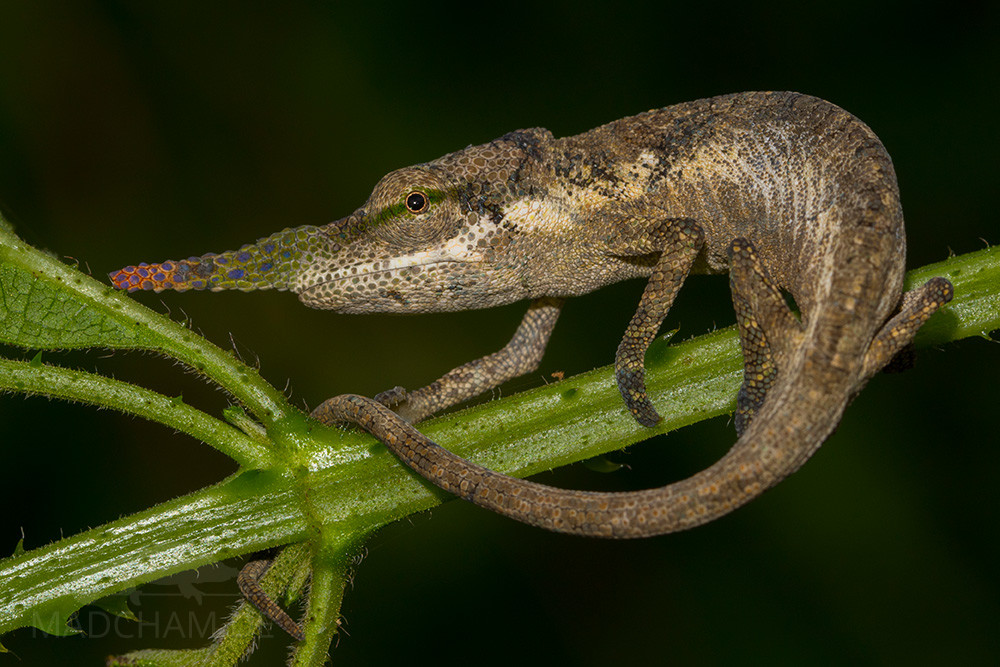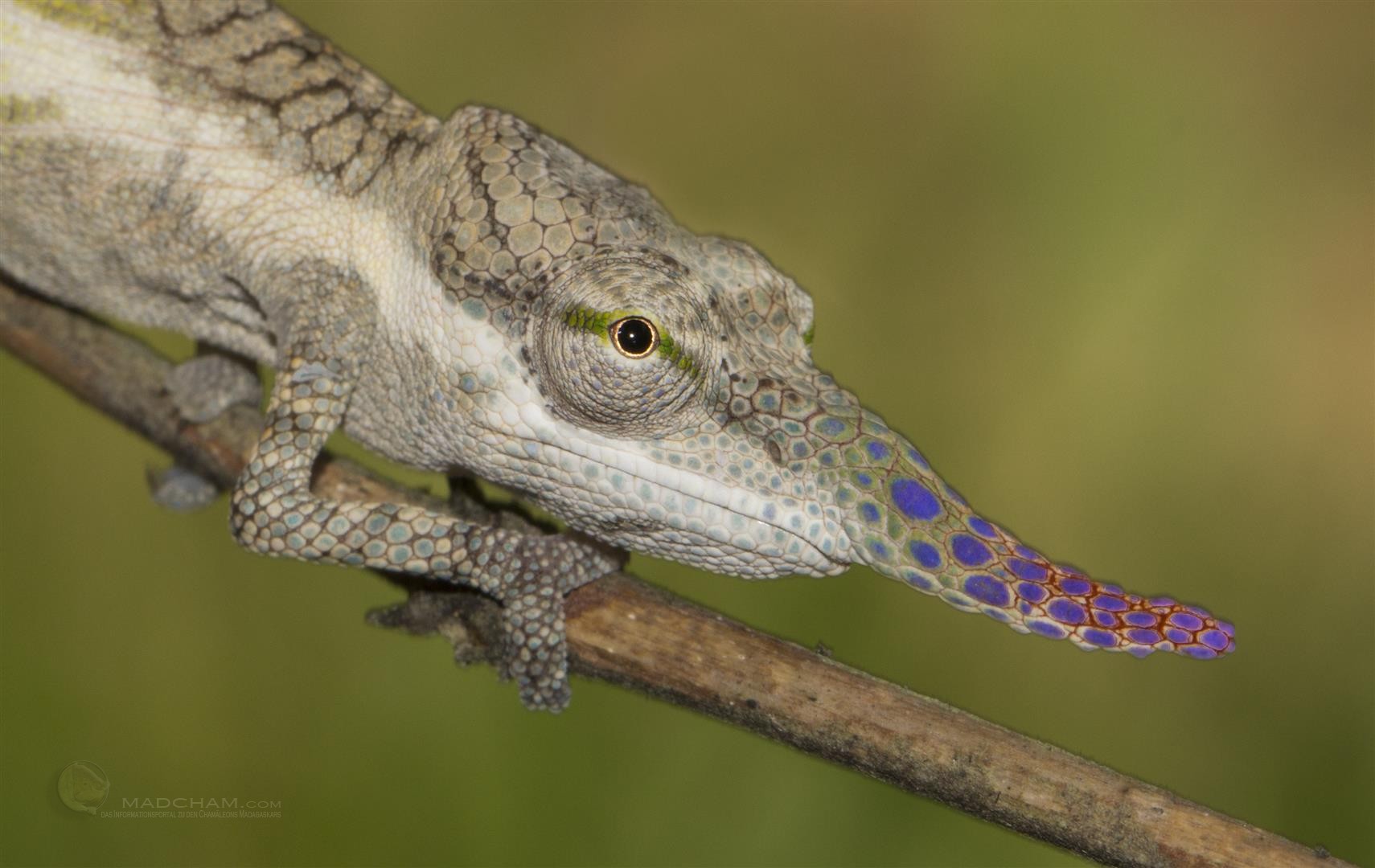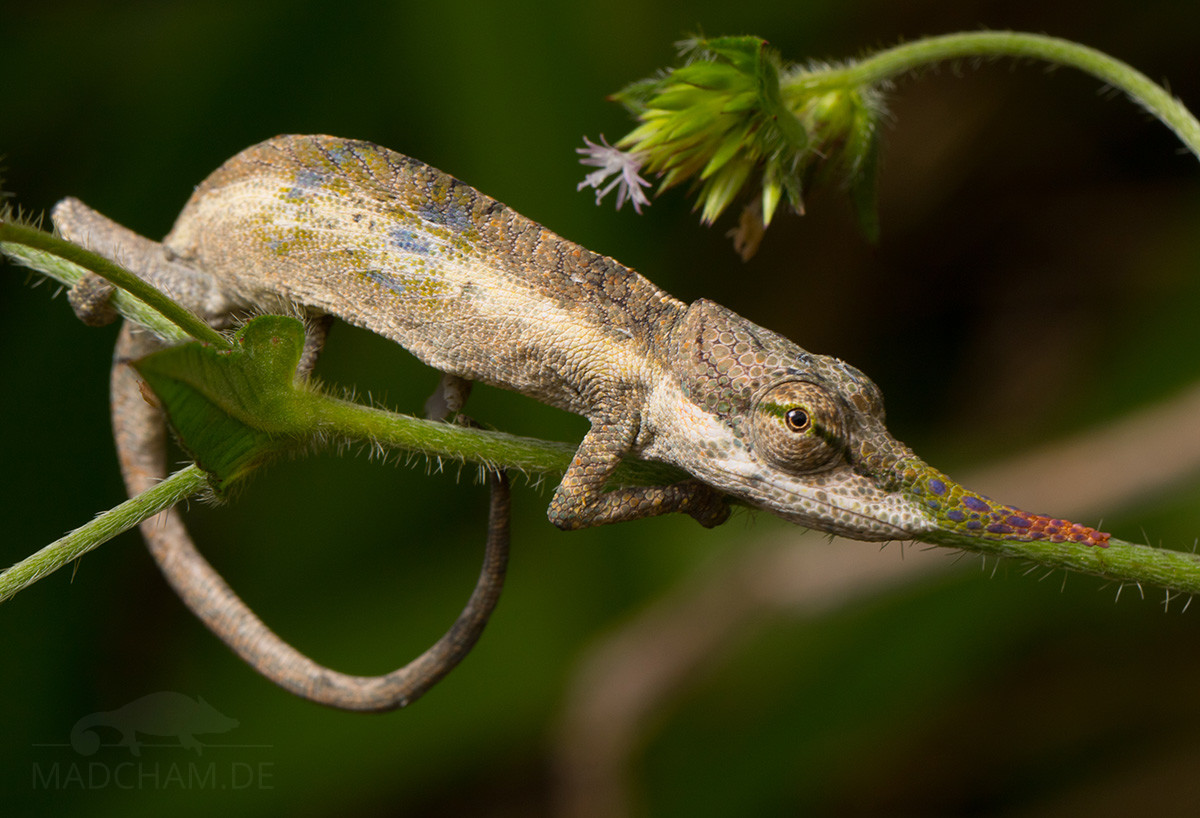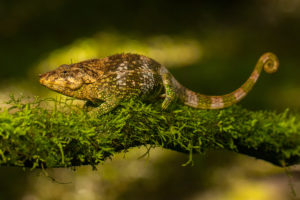no legal export possible
First description:
Origin of the species name:
The German zoologist Albert Carl Ludwig Gotthilf Günther, then Director of the Zoological Department of the Natural History Museum of London (Great Britain), described this chameleon species in a few sentences. Unfortunately, he never revealed why he chose the Latin word gallus, which translates as Gallic or Gaul.
Distribution:
Calumma gallus inhabits east and northeast Madagascar. They can be found in secondary vegetation with a high percentage of ferns. Mostly they live in habitats on steep slopes that are difficult to access. Additionally, plant cover in their habitats is extremely dense that makes finding these small chameleons very difficult. We have also found this species in two meters’ height yet.
Appearance and size:
With a total length of approximately 11 cm, this chameleon is among the smaller ones. Males have a long, pointed, and flexible nose appendage that has blue, violet, and green spots. Each nose is individual, there are no individuals with the exact same nose shape. Usually, the animals are brown-greyish, but when relaxed the males can become almost completely white with bright blue patterns. Females have a shorter, leaf-shaped, red nose appendage. Gravid females have their head dotted with blue. Otherwise, their color is brown-beige, dark brown when stressed. The casque is low but distinctly separated from the back. In Vohidrazana, females of Calumma gallus carry slightly longer rostral appendages, as shown in the following two photos.
| Jan | Feb | Mar | Apr | May | Jun | Jul | Aug | Sep | Oct | Nov | Dec | |
| Average temperature | 23 | 24 | 23 | 24 | 21 | 19 | 19 | 19 | 20 | 21 | 22 | 23 |
| Minimum temperature | 20 | 20 | 20 | 19 | 18 | 15 | 15 | 15 | 15 | 16 | 18 | 19 |
| Maximum temperature | 27 | 27 | 27 | 27 | 25 | 23 | 23 | 23 | 24 | 25 | 26 | 27 |
| Rain days | 27 | 24 | 26 | 19 | 17 | 18 | 21 | 20 | 15 | 16 | 20 | 25 |
We have collected the data given above over several years with thermometers and hygrometers at the finding places of the chameleons. "Average temperature" means that values of a whole month have been calculated to one average value per month. For example all measured minimum temperature values of February have been calculated to one average minimum temperature for February. In plain language, this means single peak values of a day may be a little higher or lower than the average minimum and maximum temperatures. It is possible that a location has an average maximum temperature of 29°C, but one day during that month it had 33°C or even 35°C there.
Examples of daily patterns of temperatures in Vohimana during the rainy season can be found below. They were recorded in 2023/24 with data loggers.

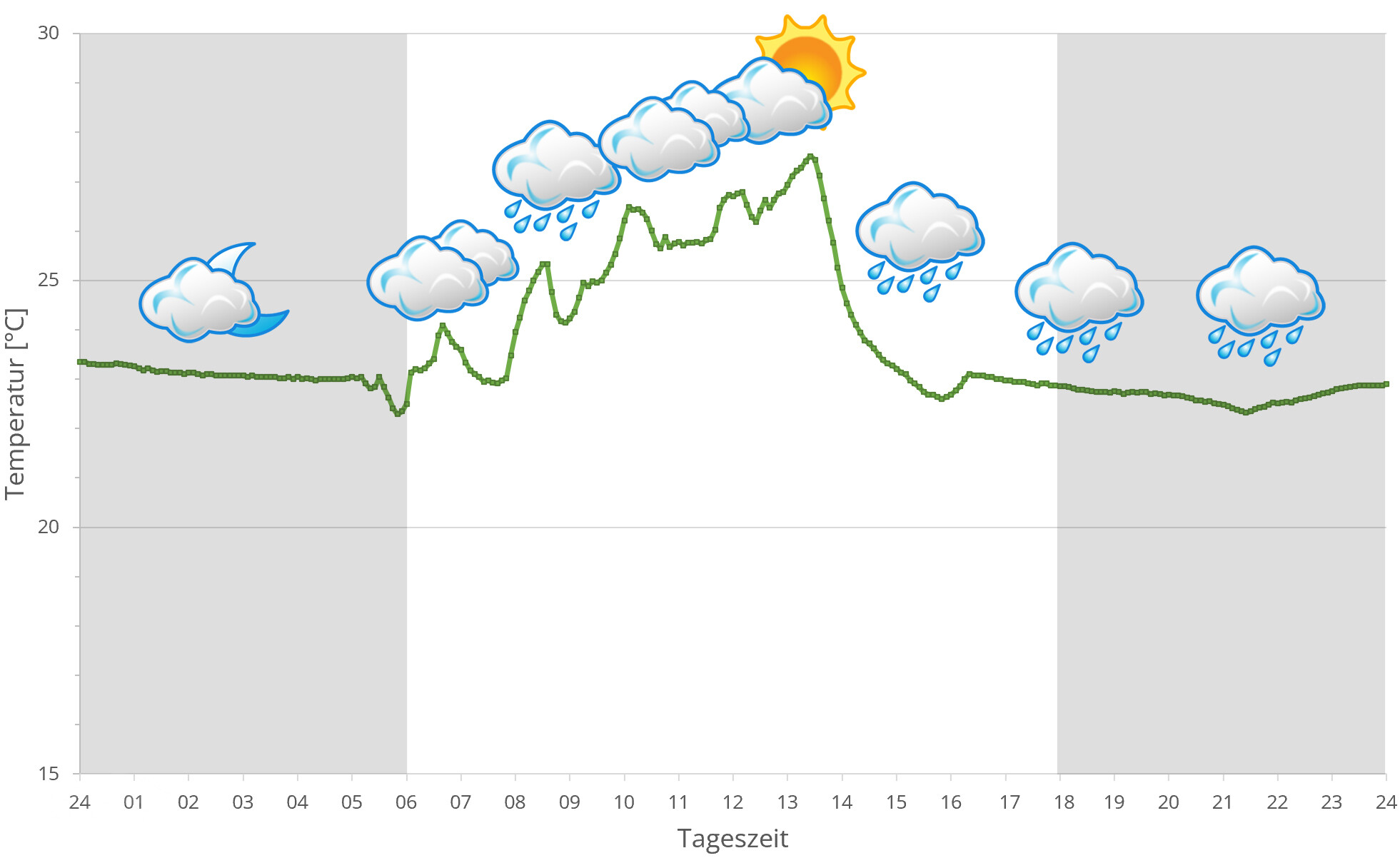
Climate in Vohimana is comparable to region Andasibe-Mantadia. It is also located in eastern highlands on eleveations about 1000 m above sea level. Accordingly, nights can become rather cool with temperatures around 15°C.
During rainy season, it rains daily and intensively. Temperatures reach 25 to 28°C during daytime, in sunny places a little more. In dry season, temperatures are lower and it does not rain daily but still regularly. In 2023/24, we measured relative humidity with data loggers on several days in Vohimana during the rainy season, the data can be found below.



 Tageszeit = day time, Sonne = sun, Halbschatten = half shade, Schatten = shade
Tageszeit = day time, Sonne = sun, Halbschatten = half shade, Schatten = shade
We have measured UVB data with a Solarmeter 6.5 in spring (beginning of April) at the peak of activity of chameleons in Madagascar. We always measured the values that a chameleon could maximally reach in its habitat.
In 2023, in addition to other climate data, we also measured the air pressure at the locations we visited in Madagascar. The following data is from a full day during the rainy season in Vohimana. On the X-axis is the time of day or night. In Madagascar, the day begins around 6 am and night falls at 6 pm. TheY axis shows the atmospheric pressure in hPa.


Habitat:
The following pictures show the habitat of Calumma gallus at the rainy season in Vohimana. Some are even from finding places of this species. The habitat of this species consists of extremely dense bushes and thin trees. The ground is completely covered with ferns. The animals prefer to live right in the middle of these shrubs, between endless thin twigs and small-leafed plants. In many places, spiny plants are also among the shrubs but do not seem to bother this species.
Below you will find some 360° images from Vohimana that we took during the rainy season. If you click on the respective image, the pictures will open in an enlarged view in a separate window. You can use the mouse to rotate in all directions. You also have the option of running the images in full-screen mode. Enjoy!





